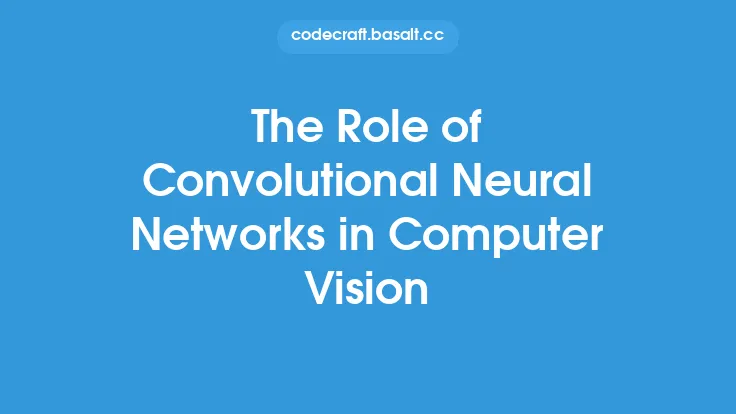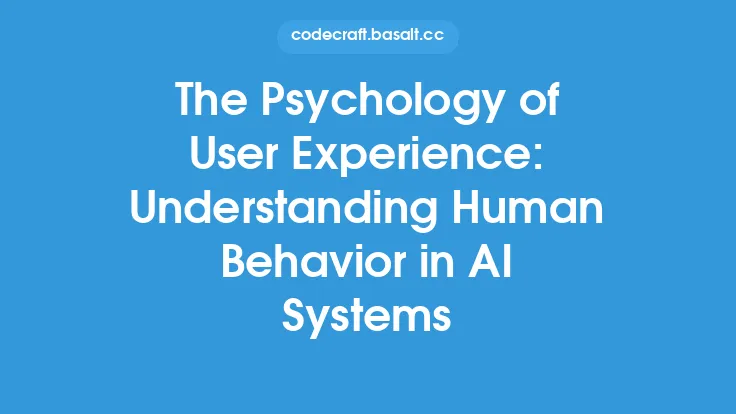Computer vision is a field of artificial intelligence that enables computers to interpret and understand visual information from the world. It is a multidisciplinary field that combines computer science, electrical engineering, mathematics, and psychology to develop algorithms and statistical models that allow computers to process, analyze, and understand digital images and videos. The goal of computer vision is to enable computers to perform tasks that would typically require human vision, such as object recognition, facial recognition, and image classification.
Introduction to Computer Vision Concepts
Computer vision involves a range of concepts, including image formation, image processing, feature extraction, object recognition, and scene understanding. Image formation refers to the process by which light interacts with objects in the world to produce an image. This process involves the reflection of light off objects, the transmission of light through lenses, and the detection of light by sensors. Image processing refers to the techniques used to enhance, transform, and analyze digital images. Feature extraction involves the identification of meaningful features or patterns in images, such as edges, lines, and shapes. Object recognition involves the identification of specific objects within images, while scene understanding involves the interpretation of the overall meaning or context of an image.
Computer Vision Techniques
There are several techniques used in computer vision, including traditional methods and deep learning-based methods. Traditional methods involve the use of hand-crafted features, such as edges, lines, and shapes, to represent images. These features are then used to train machine learning models, such as support vector machines (SVMs) and k-nearest neighbors (KNN), to perform tasks such as object recognition and image classification. Deep learning-based methods, on the other hand, involve the use of neural networks to learn features from images. These methods have become increasingly popular in recent years due to their ability to learn complex patterns and features from large datasets.
Computer Vision Applications
Computer vision has a wide range of applications, including robotics, surveillance, healthcare, and autonomous vehicles. In robotics, computer vision is used to enable robots to perceive and interact with their environment. In surveillance, computer vision is used to monitor and analyze video feeds from cameras. In healthcare, computer vision is used to analyze medical images, such as X-rays and MRIs, to diagnose diseases. In autonomous vehicles, computer vision is used to enable vehicles to perceive and respond to their environment, including detecting pedestrians, lanes, and obstacles.
Computer Vision Challenges
Despite the many advances that have been made in computer vision, there are still several challenges that must be addressed. One of the main challenges is the ability to handle variations in lighting, pose, and occlusion. Images can be affected by changes in lighting, which can make it difficult for algorithms to recognize objects. Additionally, objects can be occluded or partially hidden, which can make it difficult for algorithms to detect them. Another challenge is the ability to handle large datasets and compute-intensive algorithms. Computer vision algorithms often require large amounts of computational resources and memory, which can make them difficult to deploy on devices with limited resources.
Computer Vision Tools and Libraries
There are several tools and libraries available for computer vision, including OpenCV, Pillow, and scikit-image. OpenCV is a popular computer vision library that provides a wide range of functions for image and video processing, feature detection, and object recognition. Pillow is a Python imaging library that provides a simple and easy-to-use interface for opening, manipulating, and saving images. scikit-image is a Python library for image processing that provides algorithms for filtering, thresholding, and feature extraction. These libraries provide a wide range of functions and tools that can be used to develop computer vision applications.
Future of Computer Vision
The future of computer vision is exciting and rapidly evolving. One of the main trends is the increasing use of deep learning-based methods, which have shown state-of-the-art performance on a wide range of tasks. Another trend is the increasing use of computer vision in real-world applications, such as autonomous vehicles, robotics, and healthcare. Additionally, there is a growing interest in the development of explainable and transparent computer vision models, which can provide insights into how algorithms make decisions. Overall, computer vision has the potential to revolutionize a wide range of industries and applications, and it will be exciting to see how it continues to evolve and improve in the coming years.





